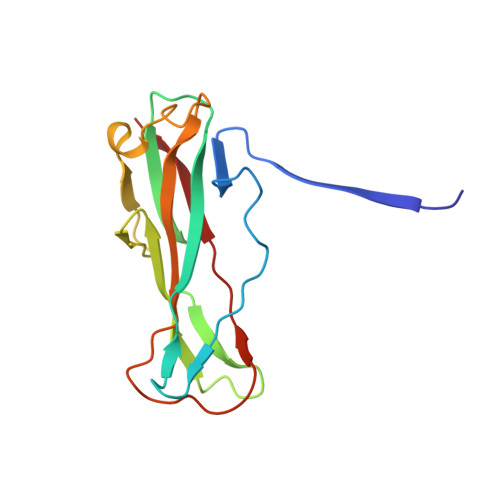Three structural solutions for bacterial adhesion pilus stability and superelasticity.
Doran, M.H., Baker, J.L., Dahlberg, T., Andersson, M., Bullitt, E.(2023) Structure 31: 529-540.e7
- PubMed: 37001523
- DOI: https://doi.org/10.1016/j.str.2023.03.005
- Primary Citation of Related Structures:
8EHR, 8EHS, 8EHT - PubMed Abstract:
Bacterial adhesion pili are key virulence factors that mediate host-pathogen interactions in diverse epithelial environments. Deploying a multimodal approach, we probed the structural basis underpinning the biophysical properties of pili originating from enterotoxigenic (ETEC) and uropathogenic bacteria. Using cryo-electron microscopy we solved the structures of three vaccine target pili from ETEC bacteria, CFA/I, CS17, and CS20. Pairing these and previous pilus structures with force spectroscopy and steered molecular dynamics simulations, we find a strong correlation between subunit-subunit interaction energies and the force required for pilus unwinding, irrespective of genetic similarity. Pili integrate three structural solutions for stabilizing their assemblies: layer-to-layer interactions, N-terminal interactions to distant subunits, and extended loop interactions from adjacent subunits. Tuning of these structural solutions alters the biophysical properties of pili and promotes the superelastic behavior that is essential for sustained bacterial attachment.
- Department of Physiology & Biophysics, Boston University Chobanian & Avedisian School of Medicine, Boston, MA 02118, USA.
Organizational Affiliation:
















